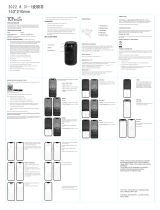
vi
Table of Contents
Chapter 1. Introduction.............................................................................................1
1.1 PC60G - MSI Wireless 11g Turbo G PCI Card....................................................1
1.2 How PC60G Works.............................................................................................2
1.3 Specifications......................................................................................................4
1.4 System Requirements.........................................................................................6
1.5 Package Contents...............................................................................................6
1.6 Product View......................................................................................................7
Chapter 2. Hardware Installation............................................................................8
Chapter 3. Software Installation.............................................................................10
Chapter 4. Wireless Network Utility......................................................................13
4.1 Introduction..........................................................................................................13
4.1.1 The MSI Wireless LAN Icon........................................................................13
4.1.2 Changing the Control Setting (for Windows XP only)..............................15
4.2 Networking..........................................................................................................16
4.2.1 Infrastructure Mode....................................................................................16
4.2.2 Ad-hoc Mode...............................................................................................22
4.3 Link Status...........................................................................................................24
4.4 Statistics..............................................................................................................25
4.5 About...................................................................................................................26
Chapter 5. MSI Software AP Setup........................................................................27
Chapter 6. Networking Basics................................................................................30
6.1 Setup...................................................................................................................30
6.2 Configuration.......................................................................................................33
6.3 Confirmation........................................................................................................34
Chapter 7. Networking Basics................................................................................35
7.1 Checking the Network Elements........................................................................35
7.2 Computer Identification.......................................................................................37
7.3 Configuring a Dynamic/Fixed IP Address..........................................................40
7.4 Checking TCP/IP Address...................................................................................44
7.5 Checking Connection by Pinging........................................................................46
7.6 Sharing Files........................................................................................................47
Chapter 8. Trouble Shooting....................................................................................51
Appendix: CE Compliance Booklet.........................................................................56




















